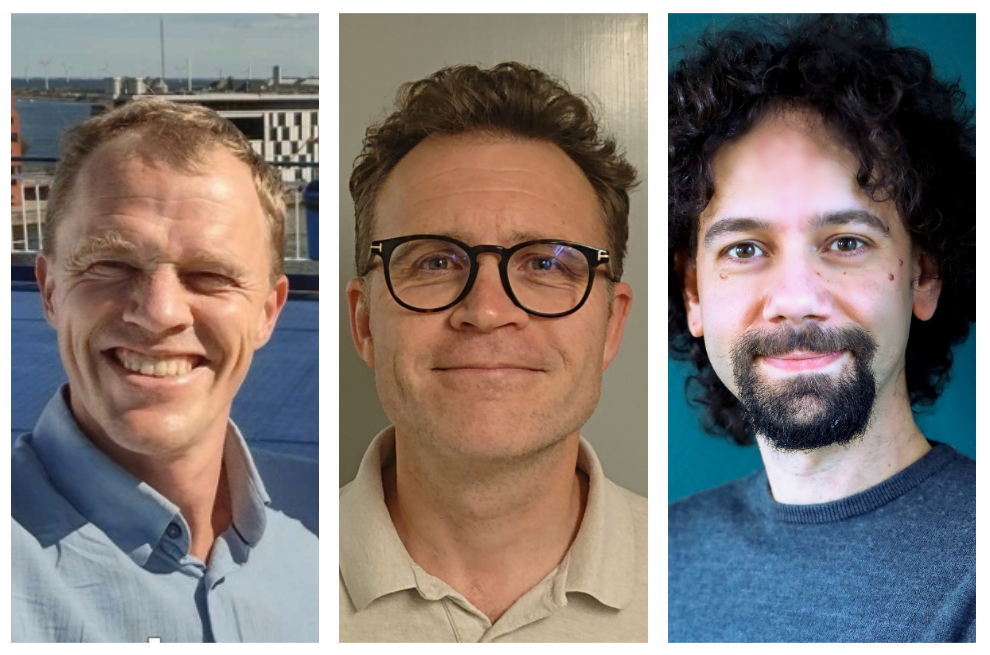Three LTH researchers to receive ERC Consolidator Grants
Per Augustsson, Enrico Ronchi and Mikkel Brydegaard have each been awarded the prestigious ERC Consolidator Grant.
Jonas Andersson – Published 3 December 2024

Enrico Ronchi, a researcher in fire safety engineering, is developing new ways to create an inclusive evacuation design for buildings. The research concerns investigating emergency evacuation solutions that are suitable for vulnerable groups such as older populations and people with functional limitations.
“The growing impact of climate change, ageing populations and geopolitical uncertainties have highlighted the need for inclusive emergency evacuations more than ever before,” says Enrico Ronchi.
As part of the ERC Egressibility project, he will build a multidisciplinary team that will carry out massive data collection of behaviours and use these data to develop an inclusive machine-learning model (according to ethical AI principles) that can transform evacuation design through what is known as the egressibility concept. Among other things, multi-sensory Virtual Reality (VR) experiments will be conducted at the Safety Hub on Campus Helsingborg to study human behaviour during different emergency evacuation scenarios.
“The ERC grant is a career changer because it provides generous funding, prestige and freedom that opensincredible opportunities for a researcher. The ERC grant will enable a paradigm shift in evacuation research and drive change towards a safer, fairer and more inclusive society,” explains Enrico Ronchi.
Projekt: Egressibility: a paradigm shift in evacuation research
Per Augustsson, a researcher in biomedical engineering, is developing new devices to separate cells and nanoparticles using ultrasound. Sound contains energy that can generate forces on microscopic objects such as blood cells and biological nanoparticles.
Blood is mostly made up of red blood cells, but also contains white blood cells that are part of the immune system. The blood of cancer patients may also contain circulating tumour cells, which are thought to play a role in how cancer spreads to different organs in the body. It is important to be able to separate out different types of cells from the blood in order to examine them in detail.
Studying the physics of ultrasound waves interacting with fluids and microscopic objects can lead to new ways to improve the diagnosis and treatment of metastatic diseases, such as cancer.
“Using ultrasound-based technology, we can identify and isolate rare cells in the blood by exploiting their unique mechanical properties. This approach allows precise characterisation of thousands of cells, enabling the development of new methods to separate subsets of cells from other blood components,” says Per Augustsson.
The results are expected to improve understanding of the functions of rare cells and support efforts to refine cancer diagnosis and treatment strategies.
“The grant means continuity for the curiosity-driven research I conduct. This means that I can keep key people in my research team for another five years, including myself. It also means that I can recruit new postdocs and doctoral students who can be trained in a challenging and exciting project,” explains Per Augustsson.
Project: HUMPH, High-power ultrasound for multiparameter single-cell mechano-phenotyping
Mikkel Brydegaard, senior lecturer at the Physics department, draws on his experiences from electrical engineering and atomic physics to develop laser diagnostic tools for new insights into the ecology and diversity of insects.
By combining biophotonics (i.e. light interaction with biological tissue) with lase remote sensing for environmental monitoring, his group makes an effort to study living organisms in their natural surroundings, rather than bringing them into laboratories and vacuum chambers. The prospects are rapid evaluation for abundance and diversity of mitigations such as flower strips or restored wetlands. Whereas the present methods for counting and classification of insect require tremendous resources and time, his methods can currently count a hundred thousand insects per day and distinguish hundreds of classes.
Within his new ERC grant HyperSense, his group will develop four new prototypes of hyperspectral lidar (or laser radar). Currently lidar systems typically have a single or a couple of wavelengths. His new concept can provide lidar with hundreds of spectral bands which can be used to deduce micro-, nano- and pico-scopic details of biological targets. Applications include classification of pollen on bees, virus in insects, hair growth on mosquitoes, navigation of midges and diversity of zooplankton.
Project: HyperSense, Remote Microscopy, Nanoscopy and Picoscopy by Hyperspectral Lidar
